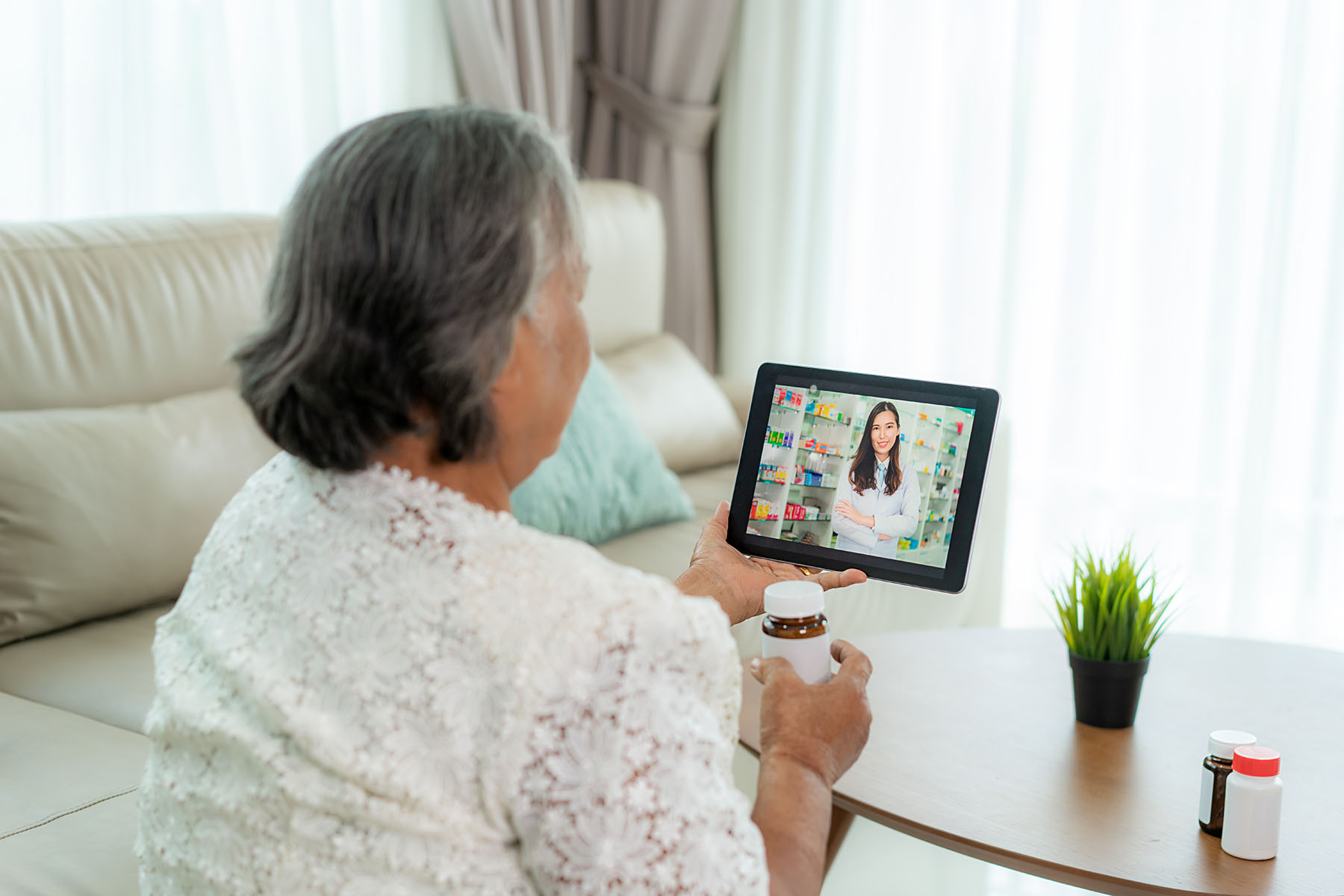In a recent “State of the Point of Care Marketing Industry 2022” report, a joint study by Point of Care Marketing Association and ZS Associates, the majority of media executives were found to view telehealth as a highly effective point of care channel. They also overwhelmingly see telehealth as being highly accurate in reaching their target audience and that the platform made that audience easy to reach.
While the platform provides very unique opportunities for engaging with the most highly targeted population available at the most valuable point in their patient journey, it is important to remember how different it is from either digital display or traditional point of care.
So how do we measure its value?
Telehealth provides the ability to drive both patient acquisition strategies and media exposure, depending upon how you’re leveraging the medium. Display media and video opportunities are available within existing telehealth consults as a traditional media buy, however, the cost and measurement of their effectiveness should be evaluated differently than other tactics.
Further, patient engagement opportunities that leverage telehealth using existing media plans are available to drive patients directly to a physician consult for education and prescription. These opportunities provide the ability to create guaranteed ROI and take advantage of the customer’s engagement at the moment they first show interest.
Both approaches are connecting a brand with the most highly targeted patient possible, a viewer who has the condition that the brand is trying to reach and who is directly in line with the brand’s targeted persona. As a result, the metrics surrounding the engagement are very different from other tactics.
Media Engagement
A significant amount of time is spent waiting for a physician at the start of every telehealth consult. These moments provide an opportunity to deliver educational content and media exposure within these pre-existing physician engagements.
The important thing to remember is that generally the purpose of marketing to patients is to influence them during their conversation with their physician. It is for this very reason that the standard methodology of measuring click-throughs doesn’t make sense within the telehealth platform. It is not strategically savvy to divert the patient away from the path to having a conversation with the physician that you’re trying to impact.
Telehealth provides a distinct advantage over standard programmatic opportunities because you can own 100% share of voice in the environment as opposed to other environments where you may be sharing visibility. In this space, the stronger focus should be on attention metrics, because the patient is exposed to the brand throughout their entire experience in highly visible positioning.
Additionally, telehealth’s ability to connect one on one with a patient or patient persona and ensure engagement significantly sets it apart from traditional point of care. You are not limited to assumptions about traffic and exposure, and you do not purchase an audience based upon the individual physician office. The ability to reach physicians, however, is equally targetable based upon their individual profiles.
Examples for how to use this medium in ways that take advantage of its strengths as opposed to fitting existing tactical implementations into it include rich media ad banners and video. Both offer the ability to create downloadable patient discussion guides that can be used in the physician consult, surveys to capture data for customer relationship management (CRM), and other opportunities to provide added value to the patient. Equally as beneficial, educational content can be delivered directly within the medium itself.
From a measurement perspective, the value of the impression generally far exceeds most other forms of display media due to the highly targeted, captive, and engaged nature of the patient. Furthermore, campaigns can be optimized in real time throughout the duration of their run due to the data collection and exact keywords that are being used by the patient. The granularity of this data collection can include demographics, conditions, and nature of the visit—and provides less guesswork because you are working with people who are deeper in the funnel.
As audience targeting is often heavily reliant upon keywords, the value of telehealth becomes more pronounced and can strongly support and influence standard programmatic and other omnichannel tactics in a more proactive fashion. Viewer duration of video content and the engagement level of the audience within rich media provide additional key performance indicators (KPIs), while script lift provides demonstrative return on investment (ROI).
Patient Acquisition
Telehealth can also be leveraged in other ways that actually facilitate the desired conversation with the physician. Using click-throughs in digital media or QR codes within traditional media such as print, out-of-home, or television, you can facilitate a dialogue with the physician from existing media campaigns through telehealth.
Through this methodology, it becomes possible to effectively guarantee new patients and prescriptions and provide the ability to analyze real-time data and metrics on every user. By identifying ideal user segments and source, you can also lower costs with new marketing efficiencies—and refine the user experience based on data to maximize engagement.
This strategy of patient acquisition creates an unparalleled ability to not only measure the effectiveness of a campaign, but ensures script lift, which can be directly tied to any individual media tactic. The ability to incorporate CRM acquisition and patient follow-up for refill reminders ensures a high ROI and the ability to measure a campaign’s success with targeted accuracy.
In Summary
The surface has only just been scratched regarding the advantages and opportunities that telehealth brings, and it’s important to design strategies that are unique to what is a new and innovative marketing tactic. With any new tactic, however, comes new ways to look at effectively measuring and evaluating KPIs.
When incorporating telehealth marketing strategies, it is important to consider the end goals of your marketing campaign and to look at the kinds of KPIs that this medium might be able to help you drive, as opposed to trying to compare it apples to apples with other tactics that don’t exactly match up.
If done right, the ability to connect with the exact audience that you’re trying to reach in a captive environment is not available in any other form of media engagement or marketing strategy—and its unparalleled value should be examined through a broader lens.










